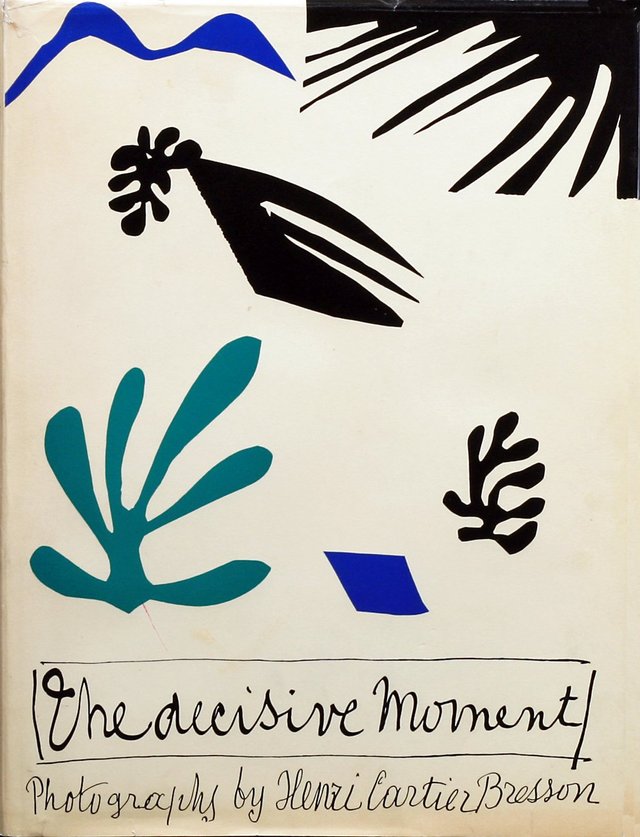The carpentry of Henri Cartier-Bresson
The carpentry of Henri Cartier-Bresson
Photography, Art and Intuition
H was born in Chanteloup-en-Brie, France. An elder son of a wealthy bourgeois family, a young Cartier-Bresson was in tune with his innate talents. He started drawing at a very young age, of vivid images and imagination that became a calling he would go back in later life. As a creative talent that later manifest in moments of pure coincidence and sheer luck, painting became a form of manifestation for a young Cartier-Bresson.
He later enrolled in a private art school and the Lhote academy. The social and psychological interactions comprehend his ideologies and perceptions that were developed within this period. Cubism was taught at the Lhote academy, and portrayed an abstract concept of art. Objects were three dimensional that were taken apart and reorganized to form an abstract art. It is taking an individual object in different parts to form a connection that creates an abstract.
He read voraciously. Hegel, Marx and Engels, many of European Enlightenment and philosophies inspired him to create concepts and methodologies to envision the form of art that he wanted to create. A humanist approach is essential to his work. As the Enlightenment reverberate universal laws and rational behavior, idealism and dialectic materialism resonate in dual concepts of Cartier-Bresson’s work. He has neither subjugation nor prejudice when approaching his subjects, without breaking any rules of ethics and over-arching boundaries.
A trip to Africa changed his perception of creating art. An image from Martin Munkasci of three young African boys ,entitled ‘Three Boys at Lake Tanganyika’, of Central Africa, made a huge impact on him.
‘Three Boys at Lake Tanganyika’
Their backs grace in a backdrop of crushing waves on the beach, with no faces shown. An aesthetic view of flow in a photograph, objects that were interacting and forming relations with each other in a simple black and white image of a contrasting polarization, an abstract.
In 1952, Cartier-Bresson wrote a book, entitled ‘The Decisive Moment’.

The book he proposed was a simple anecdote:
There is nothing in this world that does not have a decisive moment.
The photographer has the spontaneous flow of energy, the skills that he needs to construct a photograph. But it is the moment of coincidence and luck that make a photograph stand above the rest, a moment captured is here and a split of a second, is lost forever.
One of his most famous photographs. Theory in action.
Gare Saint Lazare, 1932.
I wanted to capture the quintessence of the phenomenon in a single image… in order to give meaning to the world, one has to feel oneself involved in what one frames in the viewfinder… its putting one’s head, one’s eye, one’s heart on the same axis… it is a way of life
Here he further describes the construction of a photograph. The mind, heart and energy, is a way of life. It is an ideology, that embodies the realization of the surroundings and a feeling towards the image with a cognitive approach to making a photograph. An idea is not merely just an idea, it is a way of life of using one’s capable resources and his understanding of the human nature that he is trying to capture that gives meaning to a photograph.
To me, photography is the simultaneous recognition, in a fraction of a second, of the significance of an event as well as of a precise organization of forms which give that event its proper expression.
A frame of a photograph is an organised geometry spectacle, an object to put where and how, which allows the constant flow of spectacle within the frame that is connected between these objects. An interaction between these objects has to be formed, so a form of relations constitutes a picture has a recognized meaning in its complexity.
Here, Cartier-Bresson applies geometry in one his photographs.

During his career, he traveled to many places at the right time. He was in India when Gandhi was assassinated, fall of the Guo Min Dang and the rise of Communism in China, and was granted access to document and photograph inside the Soviet Union. A form of idealism originates from dialectic materialism, where he goes from places to places to photograph images with improving precision.
Shanghai, 1948.
He was able to experience different cultures and demographics, and adapting to diverse environments with ease and composure. Aside from the political and economic turmoils experienced in countries he visited, he had a wide array of networks that allowed him visit places where no one could.
Magnum Photos was the link to the legitimate constitution of professional photographers during the period. The organisation was responsible for collecting assignments with various sources to investigate and document events.
He later retired and pursued portrait and landscape photography. Of the many artists, politicians and celebrities, he was able to intrinsically communicate with his subjects and form a vis-a-vis relationship with minimal effort. He was part of the leftist movement in France, where he mingled with French intellectuals such as Albert Camus and Jean-Paul Satre. During this period, Avant-Garde culture was booming, along with conceptual photography. His teachings in his earlier part of his life, from a humanist perspective and its guiding principles.
Humanist photography affirms the idea of a universal underlying human nature.
Albert Camus, French Leftist Philosopher. Copyrights to Henri Cartier-Bresson
In photography, the smallest thing can be a great subject. The little, human detail can become a Leitmotiv.
It is impressive that Cartier-Bresson has the ability to communicate with his subjects, and applying a form of artistic blend and his philosophy into his craft. A humanist observing the barriers of ethical conduct and intrusion, a painter in training, of which he later returned to his calling with the same curiosity that intrigued him in his early years of his life.